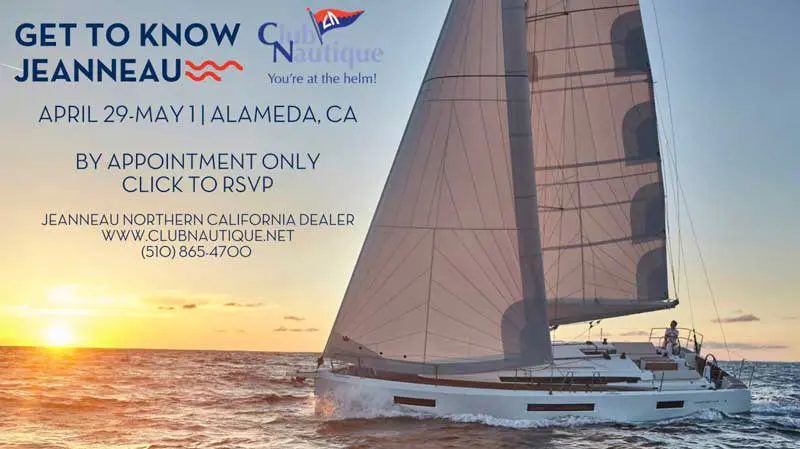
Ryan Finn’s Solo Sail From New York to San Francisco a Success
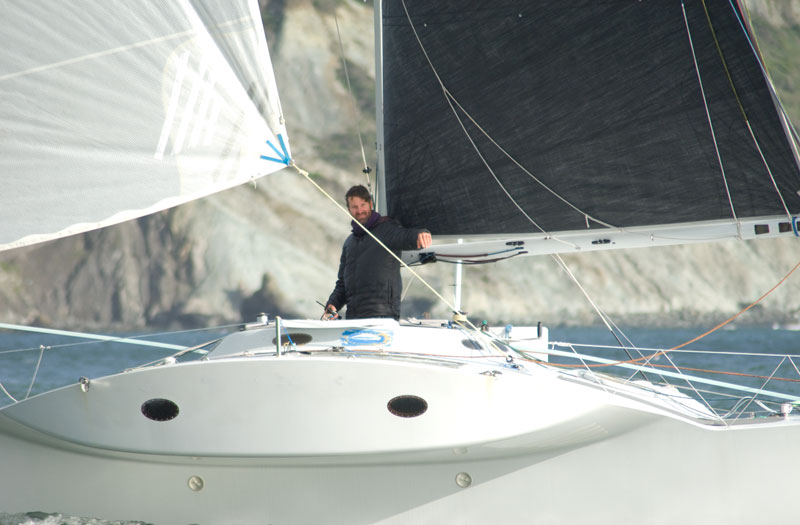
At 6:04 p.m. on Thursday, April 21, Jzerro and Ryan Finn passed under the Golden Gate Bridge in an amazing display of seamanship, boat design and adventure. But the last miles to the Gate were not easy. In his only downbeat post during the whole trip, he mentioned the frustration. “I was hoping to glide under the Golden Gate Bridge at noon today, and that was a conservative estimate. Well that’s well out of the window now. I’m drifting at 3 knots toward S.F., which is unbearable at this point. 56 miles at 3 knots is far, far away.
“Clearly the Pacific is not done with me, and punishing me for assuming there would be stable wind for the final part of this voyage. Assume nothing. My friends and family are already in S.F. waiting. It hurts to think that I could be out here for another day, but I have to accept that as a possibility. Unfortunately, the only entertainment I have on board is waiting for a weather file to download, so I’m partially at fault for continuing to suckle at that teat of misinformation. I now look at the weather models the way I look at a children’s show, with the costumed host singing and dancing in front of a smiling sun and inflatable trees. Meanwhile, I’m stuck in what feels more like a David Mamet play.”
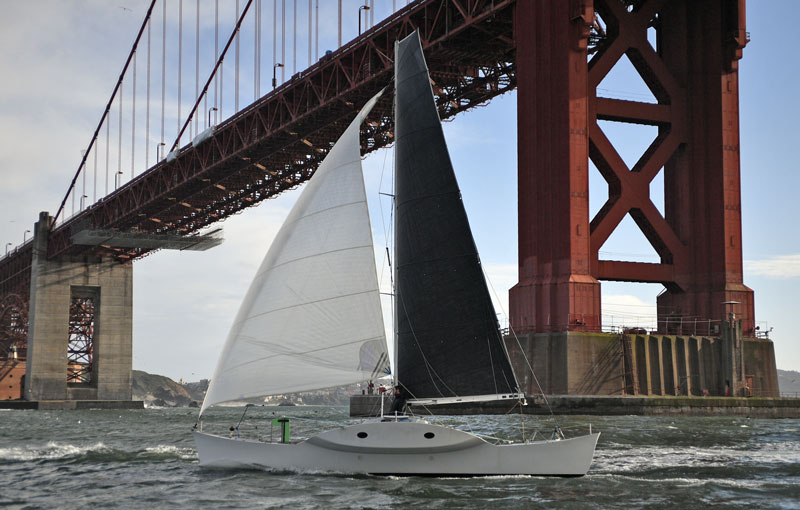
We’ve been there too, waiting just outside the Gate, knowing it’s windy just ahead but it’s taking forever. Ryan and Jzerro finally received enough wind to make it on a flood current in daylight. At the Richmond Yacht Club docks, Ryan summed up the journey. “It’s pretty presumptuous for me to think I can sail nonstop from New York to San Francisco in a 36-ft boat, right? By the time I got to Brazil I thought, ‘If I just make it around Cape Horn, that’s all I want.’ Leaving New York in winter was hard as shit. Getting around the Horn was hard. Going up the Pacific Coast is hard. This was a hard trip. Those guys that did this in square-riggers were incredible.” And he did all that singlehanded. Incredible.
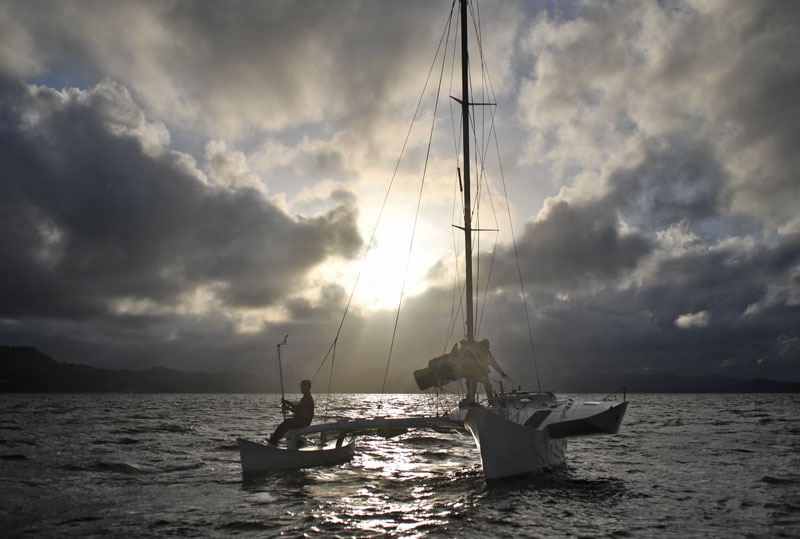
Sailors Are World Leaders for Sustainability on Earth Day and Every Day
Any sailor will tell you that one of the great reasons to sail is your connection to the sea and Mother Nature. Moving a boat across the Bay or around the world with just the power of the wind is an endlessly fascinating activity that heightens your awareness of and appreciation for the forces of nature. You also breathe in the fresh air, silently slip through the sea, and witness the ocean life that surrounds you. Every year on Earth Day, April 22, the world attempts to pause and recognize our planet that supports all life. Most sailors do this every day.
Focusing on the state of the world can be distressing, but sailors and sailing provide an example of a better way, the solutions we need, and relief from the threats we feel. On the micro-scale there are countless numbers of sailors who’ve learned how to live and enjoy life with a much lighter footprint on the planet. Is there a sailor anywhere who doesn’t marvel at and respect Lin and Larry Pardey’s circumnavigating the globe on their wooden, homebuilt, engineless, 24-ft Seraffyn? Similarly, we’re receiving lots of fan mail for Kenichi Horie, who’s more than halfway from San Francisco to Japan sailing aboard his engineless 19-ft aluminum cutter, Suntory Mermaid III. Sailors learn and know how to live simply.
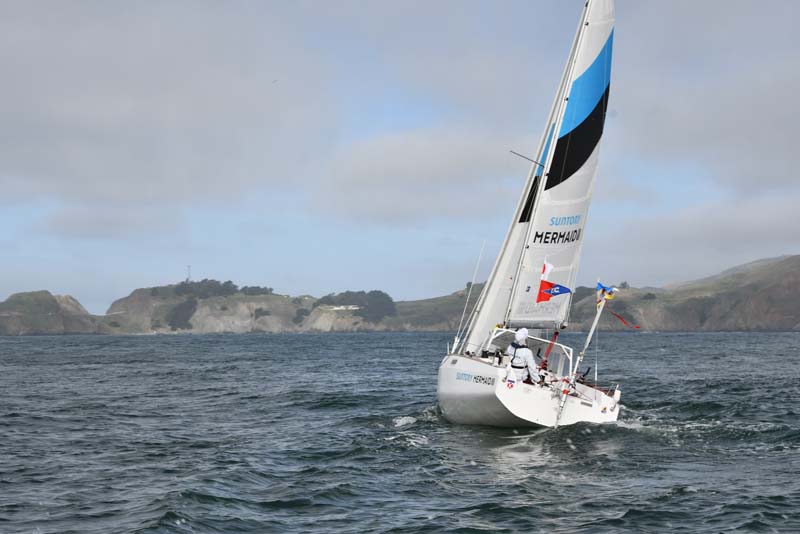
Sailors are also pioneers in many of the leading technologies that will power our future. Sailors used wind to circle the globe long before PG&E learned how to send a utility bill. Our current issue features a story by Tim Henry on green repowering with electric and fuel-cell auxiliaries. The experimental Energy Observer, which passed through San Francisco in May 2021, has traveled to Japan for the Olympics and is now in Singapore with its innovative wing sails and solar- and wind- and hydro-powered hydrogen fuel cell technology.
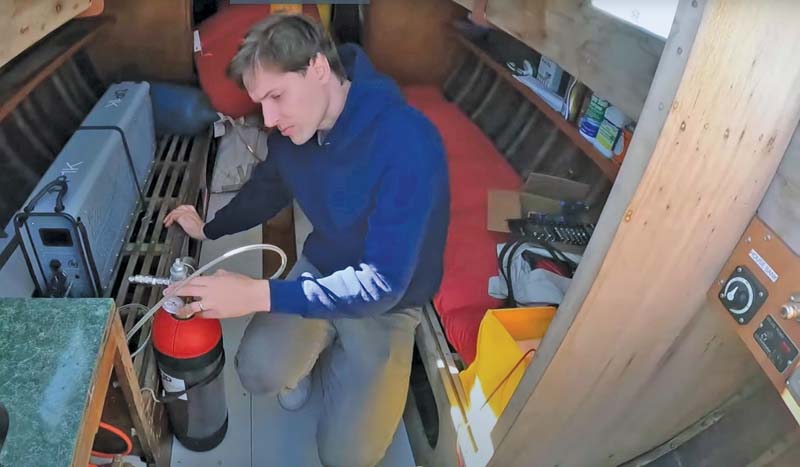
It’s sailors like David Smyth who have repowered boats like his Olson 40, Euphoria, with an electric auxiliary while professionally working at Terraform Industries to solve the puzzle of carbon capture. A well-designed, well-sailed boat like the Olson 40 hardly needs auxiliary power at all while demonstrating that reducing the need for fossil fuel energy input is an ideal model for all Earth systems.
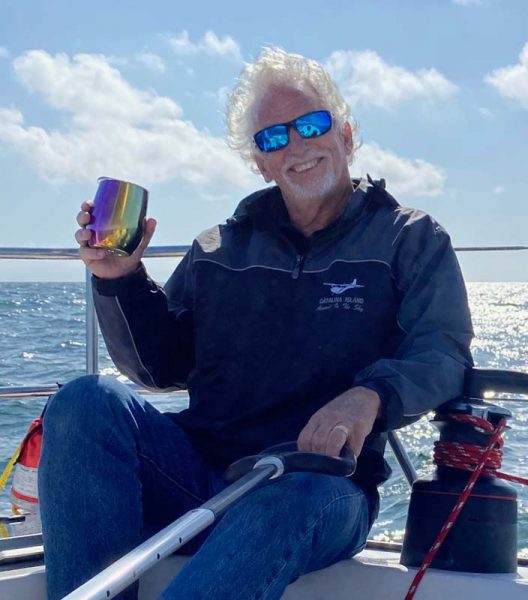
It only makes sense that someone living with just a few batteries and a small fuel tank would switch to solar power and LED lights long before a land-dweller who is plugged into a massive, carbon-spewing electrical grid where the impact from their energy usage is buried behind the grid and colorful green-marketing materials of central power utilities. Sailors constantly practice conservation and efficiency at sea and bring those lessons and habits ashore.
Bay Area sailor Bill Erkelens, who will sail in the Pacific Cup to Hawaii with his wife Melinda this summer on their Moore 24, Foamy, has a “day job” as chief operating officer for 11th Hour Racing Team’s entry in the upcoming The Ocean Race. They published a detailed and impressive report of their impacts and efforts toward more sustainable boatbuilding. This is notable for the tremendous commitment both The Ocean Race and 11th Hour Racing have made to sustainability, but we also like that Bill and Melinda continue to race in a minimalist, Santa Cruz-built Moore 24. Very cool.
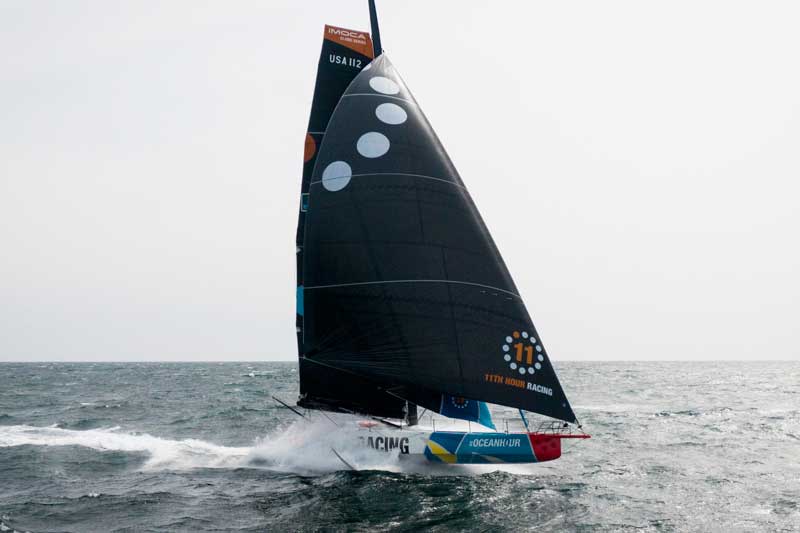
Like The Ocean Race, SailGP came to town with an enormous footprint on the Bay and the local sailing scene and a big commitment to sustainability. To accomplish that, they created the SailGP Impact League to reward individual team sustainability efforts. It’s easy for people to talk smack about large-scale events that promise small-scale impacts on the planet. However, we recognize that the big events, which traditionally have had negative impacts, are making earnest efforts with truly transformational ideas. Humans and human activity are imperfect, but we see sailors everywhere working hard to make a difference.
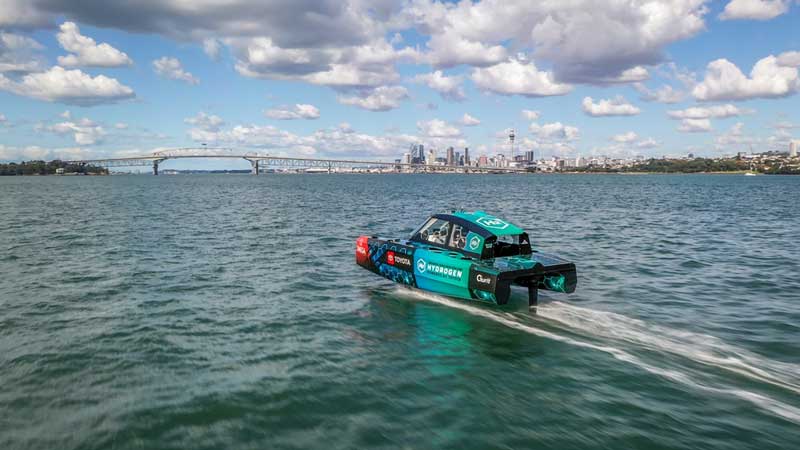
Beyond the large-scale efforts, we recognize sailors like Carolyn Rosner and Mike Hay of the 1988 Passport 37 Sula sailing out of Ventura who, like many other sailors, will do what they can to clean up the oceans while they’re out enjoying a sail. There are so many other sailors who participate in beach cleanups, fuel up with biofuel, or turn the auxiliary off sooner or start it up later to save the burning of fossil fuels.
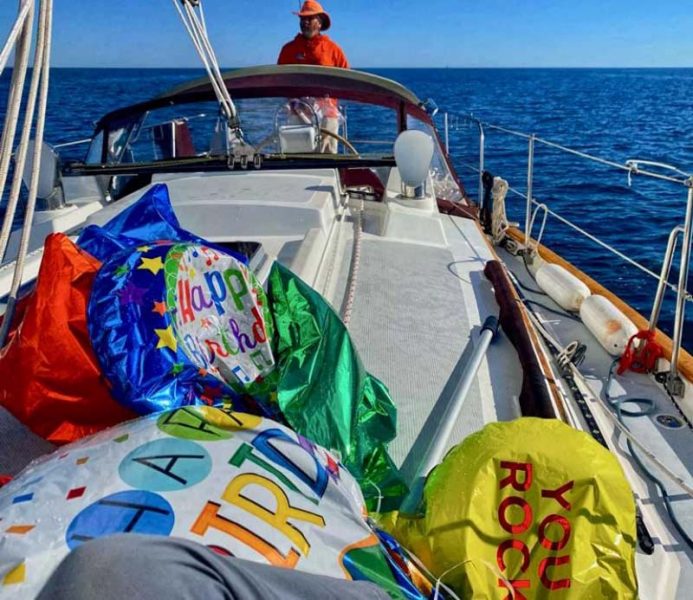
Sailors have learned to live with less and, not only that, they love it! Reducing the scale of their impact on the planet isn’t a burden, but is more eliminating the yoke on their neck of maintaining and supporting lots of “stuff.” Even more complicated sailboats are constantly looking for simplicity. The simplicity of sailing and cruising is freeing.
Many cruisers are now sailing with composting toilets (no holding tank, hoses, pumps or thru-hulls!). This is another sailor solution that could be brought ashore to save water in drought-prone California. In the Bay, the Wild Oyster Project is restoring the native, filter-feeding oyster that used to thrive here when Jack London sailed the Bay.
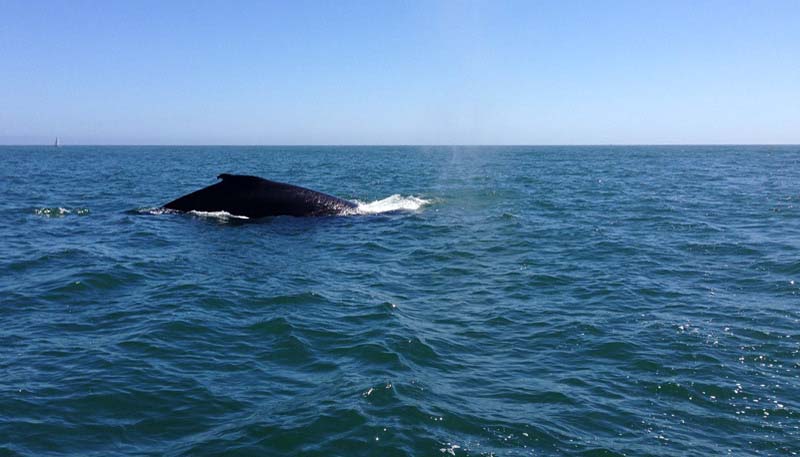
For sailors who travel long or short distances under just the power of the wind, with the sounds of nature close by and with their attention on the environment guiding their actions, the act of sailing is an alliance with the planet, not a battle against it. It’s finding alignment and agreement with something you care about and want to protect. For most sailors every day is Earth Day, and, because of this, we’re convinced if all the world were sailors, the world would be a better place. Enjoy the weekend of sailing ahead, and Happy Earth Day.
Get to Know Jeanneau with Club Nautique
Schedule an appointment with Club Nautique for the Get to Know Jeanneau weekend, April 29-May 1, in Alameda, CA.
S/V ‘Freedom Kirkland’ Finds New Hideout in Beautiful Baja
A year ago we shared a photo on Sailagram of Kirk and Char Wagner’s sailboat S/V Freedom Kirkland, anchored, somewhere. The photo prompted one reader to ask where the boat was located. We gave no hints and let readers give us their best guess. The answer was “on the beach in Puerto Balandra on Isla Carmen.”
Recently the Wagners sent us a photo of Freedom Kirkland, again anchored somewhere exotic. This time we are going to drop a hint. Yes, it is somewhere in Mexico! But we’re looking for specifics — the name of the location, and, if you can pinpoint it, the name of the anchorage.
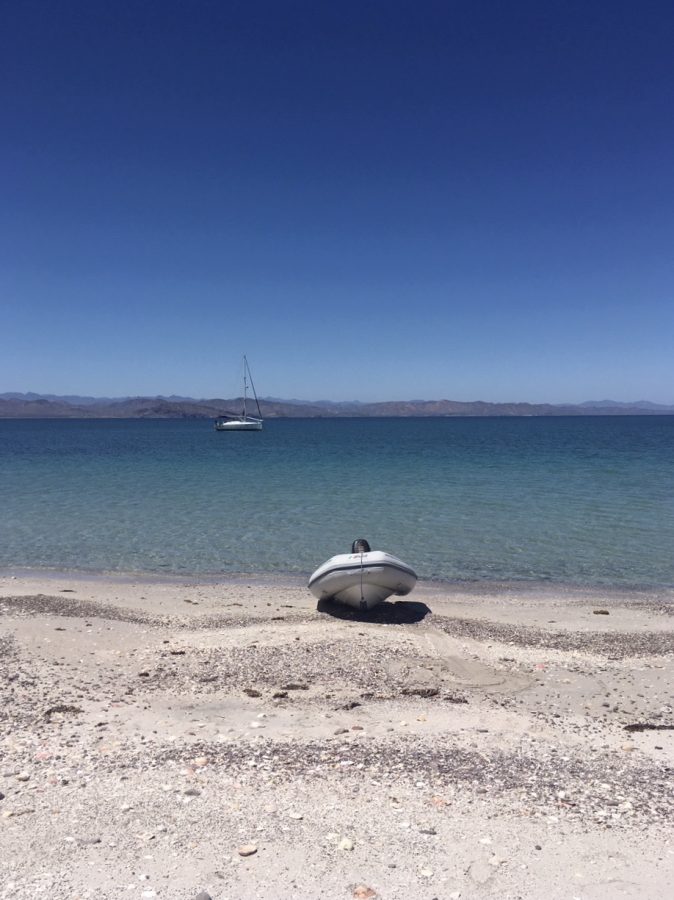
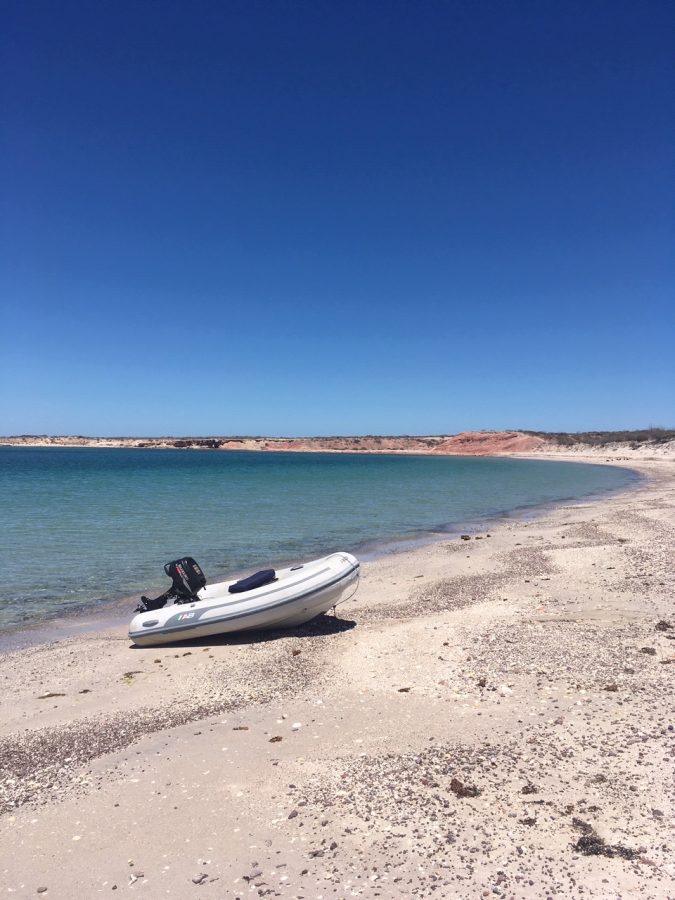
The answer is out there, somewhere …
Let us know what you think in the comments below.
74th Newport to Ensenada Race Starts Today
When the 74th Newport to Ensenada International Yacht Race starts today, 164 boats will be on the line.
In honor of NOSA’s 75th anniversary, the celebrations in Ensenada will be for the successful racers, trophy winners, and an organization that for the past 75 years has taken sailors on a fun, competitive coastal sailing adventure, making history along the way.
Taking to the Dana Point racecourse is Charles Ullman on his L30. He’s not only the youngest son of sailing great and Ullman Sails founder Dave Ullman, he’s grandson to Charles Ullman, one of NOSA’s very first directors, named handicap chairman in 1947. Also on the Dana Point course, racing for Parkinson’s awareness, will be California Inclusive Sailing’s 16-ft RS 4U.
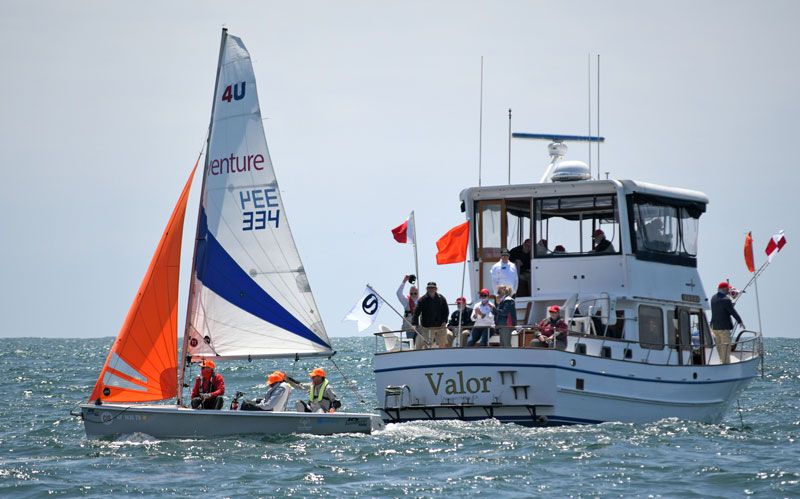
More than 20 first-time sailors have registered for the classic course south of the border. A few are big enough and fast enough to break the monohull elapsed-time record. Topping the list is Manouch Moshayedi’s Rio100, (the largest entry in recent memory), which, although second to finish the Puerto Vallarta race this year, still beat the previous record.
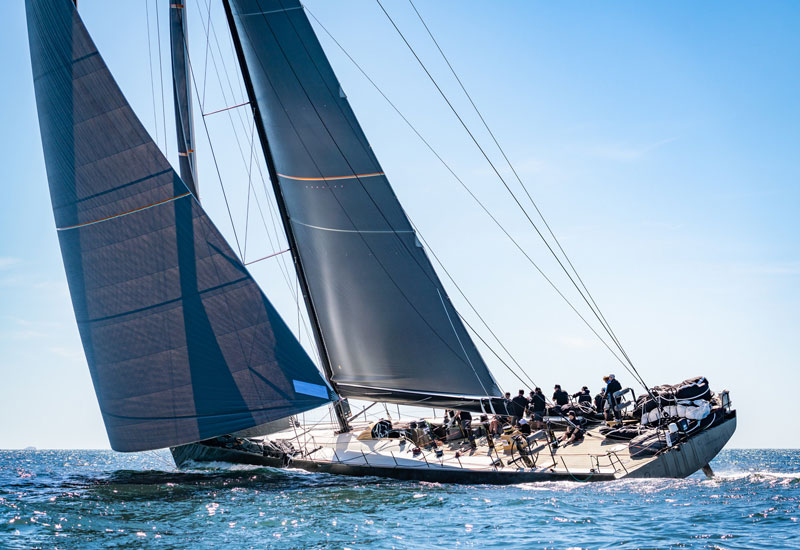
Others include Ray Paul’s Artemis, a Botin 65 from SFYC, and from CBYC, George Hershman and Mark Comings’ R/P 63 Good Energy, a sistership to the monohull record holder Aszhou. The record is 9:35:34.
But N2E is not just for serious racers. PHRF racers are the heart and soul of the regatta, as illustrated by Joe Markee’s Ohana. The 1975 Swede 55 does really well in light conditions and has won its class the last few years. Andy Horning’s Day Tripper II, an inauspicious 1990 Hunter 40, has been a PHRF class winner 15 times. He attributes the winning streak to a maintenance ritual before race day.
N2E has been a favorite of Southern California sailors — and a bucket-list race for racers across the US and Canada — not just because of the camaraderie and the fun, but because no matter how big or small the boat that floats up to the start, any boat that starts could win. In 2009 Doug Baker’s Magnitude 80 set a record for monohulls that would stand for seven years. But it was Sojourn, a Catalina 30 in PHRF K, that won Best Corrected Time honors despite finishing 10 hours behind the record-setter.
More Boats to Watch
David Nelson and his Kite 35 return to the course after a two-year COVID hiatus. The class winner represents the Royal Lake of the Woods Yacht Club in Kenora, Ontario, Canada. For the first time, his 1D35 will face direct competition from Herwig Baumgartner’s Black Marlin.
Another boat to watch will be John Raymont’s Fast Exit II, a modified Ker 51. The UK boat that sails with designer Alan Andrews aboard just won overall honors in the PV Race.
Last year’s winner of the President of USA Trophy for Best Corrected All PHRF and Jack Bailee Best Corrected – Newport Beach Club trophy, Steve Sellinger’s Triumph, a modified Santa Cruz 52, will be back on the start.
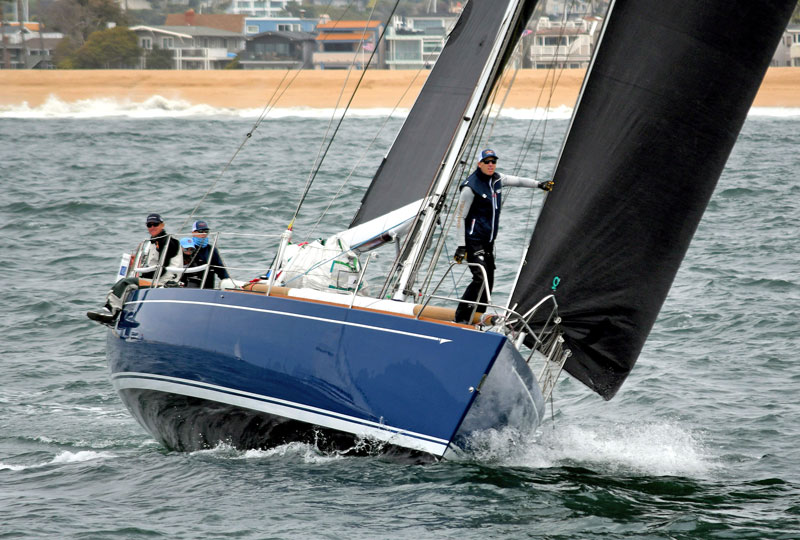
Four Farr 40s will make up the biggest class fleet. Three doublehanded entries will take to the San Diego Course 2 to Ensenada. The J/145s Palaemon and Andiamo2 will face off again on the San Diego course.
Phillip Friedman’s custom 85-footer Sapphire Knight (DRYC) on its first N2E is rumored to have a professional chef aboard. It brings back memories of the golden age of N2E when racers showed up in costumes or with a grand piano on the bow — oh, we miss you so, Prospector!
Weather models are calling for epic winds and a wild and bumpy ride. Sailing enthusiasts not racing can watch the action via YB trackers. See https://nosa.org.

